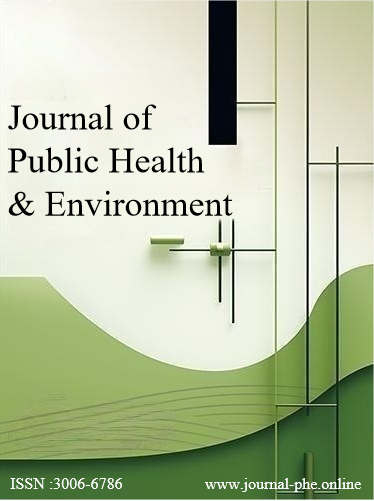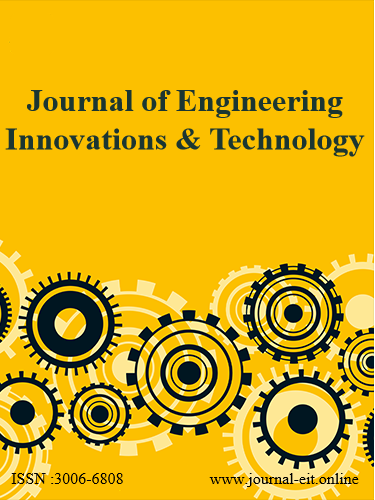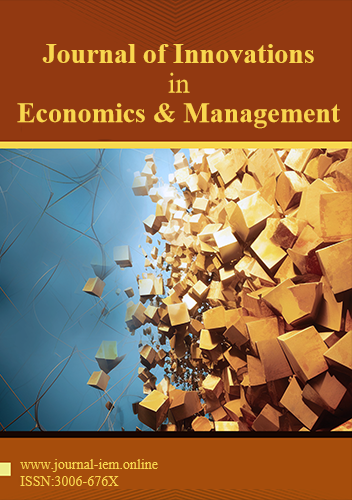Article Menu
Browse this journal
Updates
more >>
1 February 2024
Journal of Public Health & Environment Honors Exceptional Reviewers with 2023 Best Reviewer Awards
31 January 2022
Best Reviewer Award for 2021
5 February 2020
Call for Papers: Special Issue 2020
Cooperative Partner
Journal Article
 An open access journal
An open access journal
 An open access journal
An open access journal
Journal Article
Facilitators and barriers to gastrointestinal health behaviors: a systematic review based on the COM-B model
1
Department of International and Humanistic Nursing, Hunan Science Popularization Education Base, School of Nursing, Hengyang Medical School, University of South China, Hengyang, China
2
Hunan Province Key Laboratory of Tumor Cellular & Molecular Pathology, Cancer Research Institute; Hengyang Medical School, University of South China, Hengyang, China
#
Co-first author
*
Author to whom correspondence should be addressed.
JPHE 2024 7(2):251; https://doi.org/10.69610/j.phe.20240820
Received: / Accepted: / Published Online: 20 August 2024
Abstract
Background: This review examined factors contributing to gastrointestinal health behaviors using the COM-B (capability, opportunity, motivation) model. Methods: Five electronic databases (PubMed, Medline, Cochrane, Web of Science, CINAHL) were searched following PRISMA guidelines, extracting the data and applying the inductive deductive method to map the impact factors to the COM-B model. Results: The COM-B model identified 20 influencing factors mapped to five subcomponents: psychological capability, physical opportunity, social opportunity, reflective motivation, and automatic motivation. Conclusions: Enhancing gastrointestinal health entails considering personal, societal, and environmental considerations.
Copyright: © 2024 by Huang, Zou, Wang, Meng, Peng, Feng and Zeng. This is an open-access article distributed under the terms of the Creative Commons Attribution License (CC BY) (Creative Commons Attribution 4.0 International License). The use, distribution or reproduction in other forums is permitted, provided the original author(s) or licensor are credited and that the original publication in this journal is cited, in accordance with accepted academic practice. No use, distribution or reproduction is permitted which does not comply with these terms.
Share and Cite
ACS Style
Huang, L.; Zou, J.; Wang, Y.; Meng, X.; Peng, T.; Feng, G.; Zeng, Y. Facilitators and barriers to gastrointestinal health behaviors: a systematic review based on the COM-B model. Journal of Public Health & Environment, 2024, 7, 251. doi:10.69610/j.phe.20240820
AMA Style
Huang L., Zou J., Wang Y. et al.. Facilitators and barriers to gastrointestinal health behaviors: a systematic review based on the COM-B model. Journal of Public Health & Environment; 2024, 7(2):251. doi:10.69610/j.phe.20240820
Chicago/Turabian Style
Huang, Li-LI; Zou, Jing-Yu; Wang, Yi-Fei; Meng, Xin-Ru; Peng, Tong; Feng, Ge-Hui; Zeng, Ying 2024. "Facilitators and barriers to gastrointestinal health behaviors: a systematic review based on the COM-B model" Journal of Public Health & Environment 7, no.2:251. doi:10.69610/j.phe.20240820
Article Metrics
Article Access Statistics
References
- Fu T, Xu ZZ, Zhong C.(2023). Editorial: Non-coding RNAs: insights and state-of-the-art in gastrointestinal sciences. Front Physiol. 14:1248855. http://dx.doi.org/10.3389/fphys.2023.1248855
- El-Serag HB, Talley NJ.(2004). Systemic review: the prevalence and clinical course of functional dyspepsia. Aliment Pharmacol Ther. 19:643-654. http://dx.doi.org/10.1111/j.1365-2036.2004.01897.x
- Ford AC, Marwaha A, Sood R, Moayyedi P.(2015). Global prevalence of, and risk factors for, uninvestigated dyspepsia: a meta-analysis. Gut. 64:1049-1057. http://dx.doi.org/10.1136/gutjnl-2014-307843
- Liou JM, Malfertheiner P, Lee YC, et al.(2020). Screening and eradication of Helicobacter pylori for gastric cancer prevention: the Taipei global consensus. Gut. 69:2093-2112. http://dx.doi.org/10.1136/gutjnl-2020-322368
- Peery AF, Dellon ES, Lund J, et al.(2012). Burden of gastrointestinal disease in the United States: 2012 update. Gastroenterology. 143:1179-1187.e1173. http://dx.doi.org/10.1053/j.gastro.2012.08.002
- Yuan S, Chen J, Ruan X, et al.(2023). Smoking, alcohol consumption, and 24 gastrointestinal diseases: Mendelian randomization analysis. Elife. 12. http://dx.doi.org/10.7554/eLife.84051
- Al-Azri M, Al-Kindi J, Al-Harthi T, Al-Dahri M, Panchatcharam SM, Al-Maniri A.(2019). Awareness of Stomach and Colorectal Cancer Risk Factors, Symptoms and Time Taken to Seek Medical Help Among Public Attending Primary Care Setting in Muscat Governorate, Oman. J Cancer Educ. 34:423-434. http://dx.doi.org/10.1007/s13187-017-1266-8
- Trieu K, McMahon E, Santos JA, et al.(2017). Review of behaviour change interventions to reduce population salt intake. Int J Behav Nutr Phys Act. 14:17. http://dx.doi.org/10.1186/s12966-017-0467-1
- Michie S, van Stralen MM, West R.(2011). The behaviour change wheel: a new method for characterising and designing behaviour change interventions. Implement Sci. 6:42. http://dx.doi.org/10.1186/1748-5908-6-42
- Martín-Payo R, Martínez-Urquijo A, Zabaleta-Del-Olmo E, Del Mar Fernandez-Alvarez M.(2023). Use a web-app to improve breast cancer risk factors and symptoms knowledge and adherence to healthy diet and physical activity in women without breast cancer diagnosis (Precam project). Cancer Causes Control. 34:113-122. http://dx.doi.org/10.1007/s10552-022-01647-x
- Silveira SL, Riemann-Lorenz K, Heesen C, Motl RW.(2021). Current and Long-Term Physical Activity Among Adults with Multiple Sclerosis in the United States: COM-B Variables as Explanatory Factors. Int J Behav Med. 28:561-574. http://dx.doi.org/10.1007/s12529-020-09946-w
- Otiniano ME, Wood RC, Poursani RS, Katerndahl DA, Siddiqui S, Nadeau MT.(2013). Association of knowledge, attitudes, and behaviors for colon cancer screening in Hispanic patients. Ethn Dis. 23:343-348.
- Kotwal AA, Lauderdale DS, Waite LJ, Dale W.(2016). Differences between husbands and wives in colonoscopy use: Results from a national sample of married couples. Prev Med. 88:46-52. http://dx.doi.org/10.1016/j.ypmed.2016.03.011
- Hawkins NA, Berkowitz Z, Rodriguez JL.(2015). Awareness of Dietary and Alcohol Guidelines Among Colorectal Cancer Survivors. Am J Prev Med. 49:S509-517. http://dx.doi.org/10.1016/j.amepre.2015.08.012
- Emmons KM, McBride CM, Puleo E, et al.(2005). Prevalence and predictors of multiple behavioral risk factors for colon cancer. Prev Med. 40:527-534. http://dx.doi.org/10.1016/j.ypmed.2004.10.001
- Cho A, Chaudhry A, Minsky-Primus L, et al.(2006). Acceptance of repeat esophagogastroduodenoscopy to detect gastric cancer in a Chinese immigrant cohort. J Clin Gastroenterol. 40:606-611. http://dx.doi.org/10.1097/00004836-200608000-00009
- Tran MT, Jeong MB, Nguyen VV, et al.(2018). Colorectal cancer beliefs, knowledge, and screening among Filipino, Hmong, and Korean Americans. Cancer. 124 Suppl 7:1552-1559. http://dx.doi.org/10.1002/cncr.31216
- Wang YX, Zou JY, Hu LF, et al.(2022). What is the general Chinese public's awareness of and attitudes towards Helicobacter pylori screening and associated health behaviours? A cross-sectional study. BMJ Open. 12:e057929. http://dx.doi.org/10.1136/bmjopen-2021-057929
- Liu Q, Zeng X, Wang W, et al.(2019). Awareness of risk factors and warning symptoms and attitude towards gastric cancer screening among the general public in China: a cross-sectional study. BMJ Open. 9:e029638. http://dx.doi.org/10.1136/bmjopen-2019-029638
- Lee KY, Wei CY, Wu MH, Hsieh CM.(2020). Determinants of the Public Health Promotion Behavior: Evidence from Repurchasing Health Foods for Improving Gastrointestinal Tract Functions. Int J Environ Res Public Health. 17. http://dx.doi.org/10.3390/ijerph17207604
- Abbott J, Dodd M, Webb AK.(1996). Health perceptions and treatment adherence in adults with cystic fibrosis. Thorax. 51:1233-1238. http://dx.doi.org/10.1136/thx.51.12.1233
- Vrinten C, Waller J, von Wagner C, Wardle J.(2015). Cancer fear: facilitator and deterrent to participation in colorectal cancer screening. Cancer Epidemiol Biomarkers Prev. 24:400-405. http://dx.doi.org/10.1158/1055-9965.Epi-14-0967
- Hahm MI, Park EC, Choi KS, Lee HY, Park JH, Park S.(2011). Inequalities in adoption of cancer screening from a diffusion of innovation perspective: identification of late adopters. Cancer Epidemiol. 35:90-96. http://dx.doi.org/10.1016/j.canep.2010.08.009
- Hahm MI, Choi KS, Park EC, Kwak MS, Lee HY, Hwang SS.(2008). Personal background and cognitive factors as predictors of the intention to be screened for stomach cancer. Cancer Epidemiol Biomarkers Prev. 17:2473-2479. http://dx.doi.org/10.1158/1055-9965.Epi-08-0027
- Adane M, Mengistie B, Mulat W, Kloos H, Medhin G.(2017). Erratum to: Utilization of health facilities and predictors of health-seeking behavior for under-five children with acute diarrhea in slums of Addis Ababa, Ethiopia: a community-based cross-sectional study. J Health Popul Nutr. 36:14. http://dx.doi.org/10.1186/s41043-017-0091-3
- Madlensky L, Esplen MJ, Gallinger S, McLaughlin JR, Goel V.(2003). Relatives of colorectal cancer patients: factors associated with screening behavior. Am J Prev Med. 25:187-194. http://dx.doi.org/10.1016/s0749-3797(03)00202-2
- Ng ES, Tan CH, Teo DC, Seah CY, Phua KH.(2007). Knowledge and perceptions regarding colorectal cancer screening among Chinese--a community-based survey in Singapore. Prev Med. 45:332-335. http://dx.doi.org/10.1016/j.ypmed.2007.06.021
- Kerrison RS, Sheik-Mohamud D, McBride E, et al.(2021). Patient barriers and facilitators of colonoscopy use: A rapid systematic review and thematic synthesis of the qualitative literature. Prev Med. 145:106413. http://dx.doi.org/10.1016/j.ypmed.2020.106413
- Hu LF, Yue QQ, Tang T, et al.(2023). Knowledge and belief of fecal occult blood screening: A systematic review. Public Health Nurs. 40:782-789. http://dx.doi.org/10.1111/phn.13206
- Fan L, Sidani S.(2018). Factors Influencing Preferences of Adults With Type 2 Diabetes for Diabetes Self-Management Education Interventions. Can J Diabetes. 42:645-651. http://dx.doi.org/10.1016/j.jcjd.2018.04.003
- Pugh G, Hough R, Gravestock H, Haddrell JB, Beeken RJ, Fisher A.(2018). The Lifestyle Information and Intervention Preferences of Teenage and Young Adult Cancer Survivors: A Qualitative Study. Cancer Nurs. 41:389-398. http://dx.doi.org/10.1097/ncc.0000000000000508
- Clark E, Wood F, Wood S.(2022). Barriers and facilitators to the use of personal information documents in health and social care settings for people living with dementia: A thematic synthesis and mapping to the COM-B framework. Health Expect. 25:1215-1231. http://dx.doi.org/10.1111/hex.13497
- Puli AV, Lussiez A, MacEachern M, et al.(2023). Barriers to Colorectal Cancer Screening in US Immigrants: A Scoping Review. J Surg Res. 282:53-64. http://dx.doi.org/10.1016/j.jss.2022.08.024
- Travis E, Ashley L, Pownall M, O'Connor DB.(2020). Barriers to flexible sigmoidoscopy colorectal cancer screening in low uptake socio-demographic groups: A systematic review. Psychooncology. 29:1237-1247. http://dx.doi.org/10.1002/pon.5443
- Keller KG, Toriola AT, Schneider JK.(2021). The relationship between cancer fatalism and education. Cancer Causes Control. 32:109-118. http://dx.doi.org/10.1007/s10552-020-01363-4
- Emanuel AS, Godinho CA, Steinman C, Updegraff JA.(2018). Education differences in cancer fatalism: The role of information-seeking experiences. J Health Psychol. 23:1533-1544. http://dx.doi.org/10.1177/1359105316664129
- Nisar M, Khan A, Kolbe-Alexander TL.(2022). 'Cost, culture and circumstances': Barriers and enablers of health behaviours in South Asian immigrants of Australia. Health Soc Care Community. 30:e3138-e3149. http://dx.doi.org/10.1111/hsc.13759
- Vrinten C, McGregor LM, Heinrich M, et al.(2017). What do people fear about cancer? A systematic review and meta-synthesis of cancer fears in the general population. Psychooncology. 26:1070-1079. http://dx.doi.org/10.1002/pon.4287
- Chae J, Lee CJ.(2019). The Psychological Mechanism Underlying Communication Effects on Behavioral Intention: Focusing on Affect and Cognition in the Cancer Context (vol 46, pg 597, 2019). Communication Research. 46:1050-1050. http://dx.doi.org/10.1177/0093650219872870
- Hay JL, Buckley TR, Ostroff JS.(2005). The role of cancer worry in cancer screening: a theoretical and empirical review of the literature. Psychooncology. 14:517-534. http://dx.doi.org/10.1002/pon.864
- Hamilton JB, Worthy VC, Moore AD, Best NC, Stewart JM, Song MK.(2017). Messages of Hope: Helping Family Members to Overcome Fears and Fatalistic Attitudes Toward Cancer. J Cancer Educ. 32:190-197. http://dx.doi.org/10.1007/s13187-015-0895-z
- Miles A, Voorwinden S, Chapman S, Wardle J.(2008). Psychologic predictors of cancer information avoidance among older adults: the role of cancer fear and fatalism. Cancer Epidemiol Biomarkers Prev. 17:1872-1879. http://dx.doi.org/10.1158/1055-9965.Epi-08-0074
- Vrinten C, Boniface D, Lo SH, Kobayashi LC, von Wagner C, Waller J.(2018). Does psychosocial stress exacerbate avoidant responses to cancer information in those who are afraid of cancer? A population-based survey among older adults in England. Psychol Health. 33:117-129. http://dx.doi.org/10.1080/08870446.2017.1314475
- He J, Wang Y, Du Z, Liao J, He N, Hao Y.(2020). Peer education for HIV prevention among high-risk groups: a systematic review and meta-analysis. BMC Infect Dis. 20:338. http://dx.doi.org/10.1186/s12879-020-05003-9
- Topping KJ.(2022). Peer Education and Peer Counselling for Health and Well-Being: A Review of Reviews. Int J Environ Res Public Health. 19. http://dx.doi.org/10.3390/ijerph19106064





